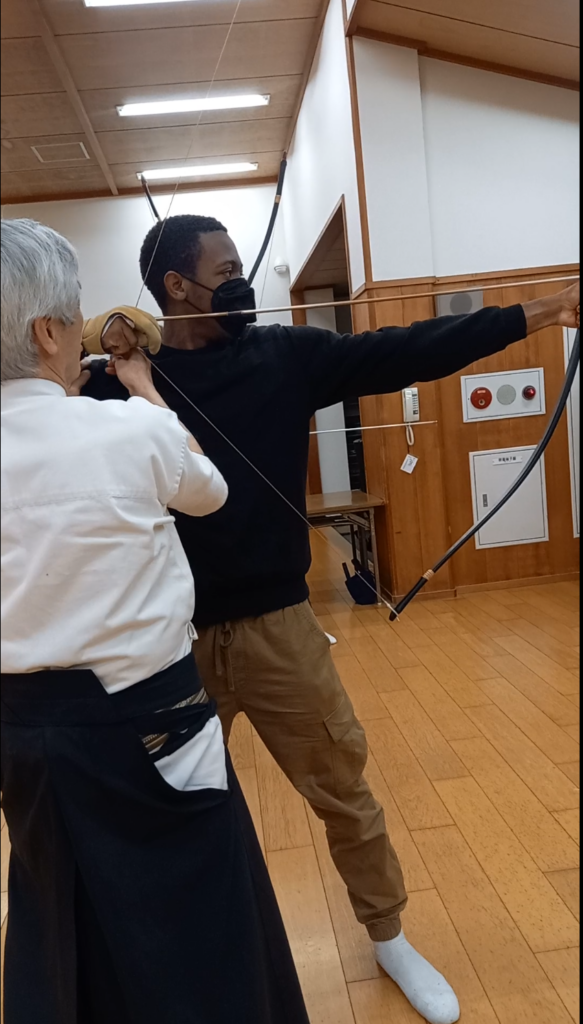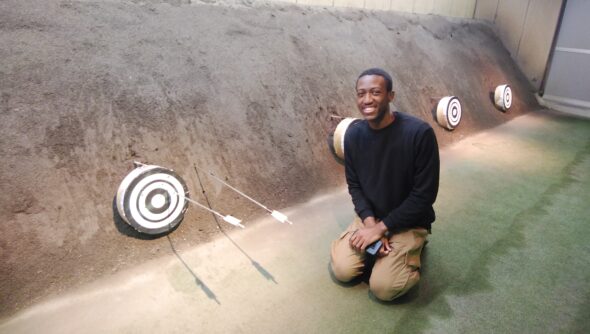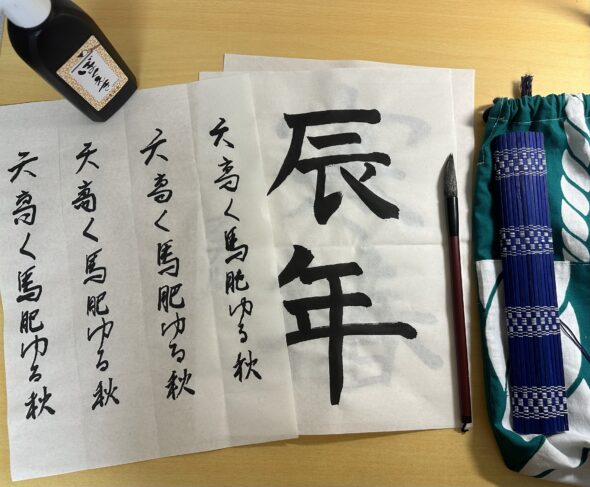For my CIP, I chose to be an English Assistant at Ohara Gakuin, a combined elementary and middle school with about 70 total students in the Northern Kyoto area. Because I do some teaching and tutoring back at my home institution, this CIP was right up my alley and I would be able to take some teaching skills with me when I go back home. Not to mention, I would be able to experience the Japanese lifestyle in many ways that other people wouldn’t get the chance to otherwise.
I remember my first trip up to Ohara ― it was about a 50 minute commute up to the school, and I was so nervous to meet the hosting English teacher and the students. I got to the school, my anxious self practically shaking, and introduced myself to the English teacher, Maruta sensei. Maruta sensei was incredibly nice and welcoming, and he introduced me to the Principal and Vice-Principal of the school as well as other teachers and staff. He also gave me a complete tour of the school and introduced me to some of his students before we reached the classroom where we had our first lesson. Luckily, another english teacher from the JET program, was also there to help me get accustomed to the job. I didn’t do much the first day, but I observed the class activities for the day and got to do some english conversation with the students. The kids were really polite and cheerful, a lot of them very eager and enthusiastic to meet me. After that day, I wasn’t so sure why I was so nervous in the beginning.
For the following visits to Ohara, I was in charge of making and presenting to the students a 15 minute presentation in English about my life, where I’m from, my hobbies and interests, etc. For each day I came, I would see a different class year (each class year had their own classroom because it was such a small school), starting with the 9th graders and ending with the 3rd graders. Of course, as I made my way down to the younger students, I also had to change my pace and how much English I had to translate in my presentation. Although presenting got fairly difficult as time progressed, the students were still very enthusiastic and very excited to hear much about my life in the US as well as about myself. The younger kids especially were amazed, and it was so cute to see them try their best at trying to communicate to me. After the presentation, I would normally help out with the planned activities that the teacher had for the day, including but not limited to conversation practice, vocabulary memorization games, pronunciation practice, listening practice, etc. I wasn’t able to plan for the classes as much as I had originally thought, but the English teacher would do his best to incorporate my strengths and knowledge to the class beforehand. Although the classes were relatively short (only about 50 minutes), they were jam-packed with engaging activities for the kids, and I had a blast teaching alongside Maruta sensei.
Other than the presentations and activities, I tried to engage with the students in other ways and partake in many parts of their extracurricular lives. For example, in Japanese schools, before class they have the students help in cleaning up the school (i.e. sweeping/mopping the floors, throwing away trash, erasing the boards) and some days I would help them clean up. One fun thing that I remember during those times is how they played rock-paper-scissors (jan-ken) to see who would be in charge of taking out the trash (and most times that person would be me…). Although not the most fun task to do, it would be a chance for me to talk to the students of different classrooms and help them with their english. Other than that, I had the chance to see their school play and the arts and crafts they made for the school festival, and also sit in on their election of class representatives for the next class year. Sometimes, when given the chance, I would also play piano or ukulele for them ― they always go crazy for those kinds of things. I tried my best to get myself involved not only in the classroom, but in other aspects of the Japanese school lifestyle.
Thanks to my involvement as an English teacher for the CIP program, I was able to get a hands-on look into the Japanese education system, and from that I noticed a lot of interesting things. Of the many things, I think one of the most interesting was the relationship between the older kids and the younger kids. Because Ohara is such a small school, with a large range of ages, I was amazed to see the camaraderie between the students, a lot of times the older students acted as older brothers and sisters for the younger kids and they would always help each other out. In this small community, the teachers really foster a role model relationship among its students ― the older students give the younger students someone to look up to and motivate them to grow in certain ways. Of course, these relationships are mutual and help give these students a strong basis for character, something that I believe that schools in America don’t always particularly emphasize in educational settings.
Along with the many good things that came with this experience, there were also some points during the teaching that I found difficult. One of those was the fact that I wasn’t able to get establish as strong a relationship with the students as much as I thought I would. Being that I would only go to Ohara for 2 hours at a time every week, especially visiting different sets of students each time, I wasn’t able to truly get to know each of the students as much as I had thought I would. In hindsight, I hoped that I could have been able to spend more time with each class, but then again, with my already tight schedule with classwork and travel around Kyoto, it seems difficult to do so.
With that aside, reflecting on my experiences as an English teacher at Ohara this semester, I think that it was an incredibly valuable and fun experience to be a part of. Seeing the smiles on these kids faces, as well as their passion and enthusiasm to learn English, brightened my day each and every time I made a visit. I can’t imagine my study abroad experience in Kyoto without having done this CIP. To not only be able to experience the Japanese lifestyle in a unique way, but also have the chance to help change the perspectives of each of these kids is something that I would greatly recommend to others that are thinking of doing the same kind of CIP activity. Good luck to those choosing their CIP!



